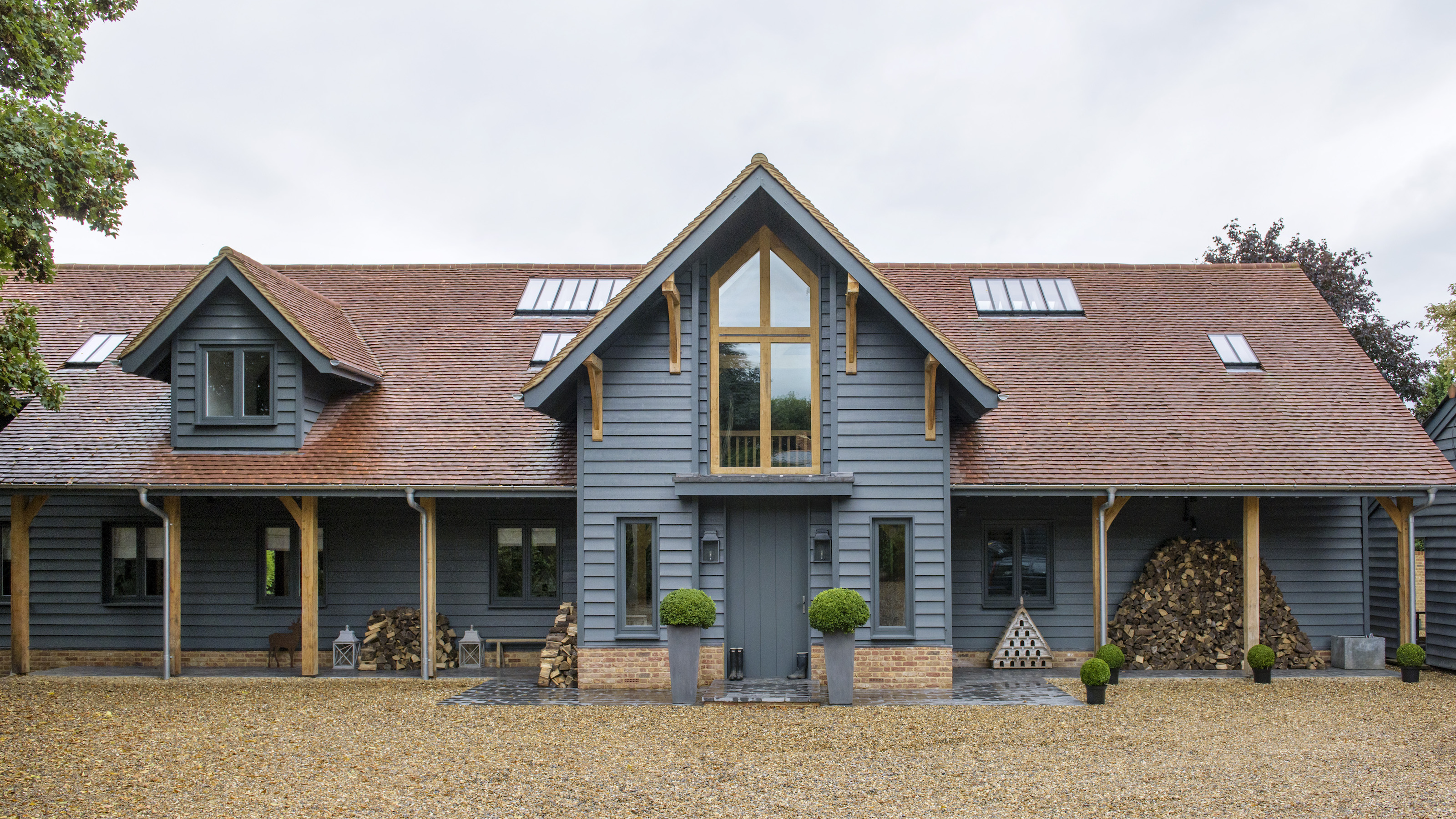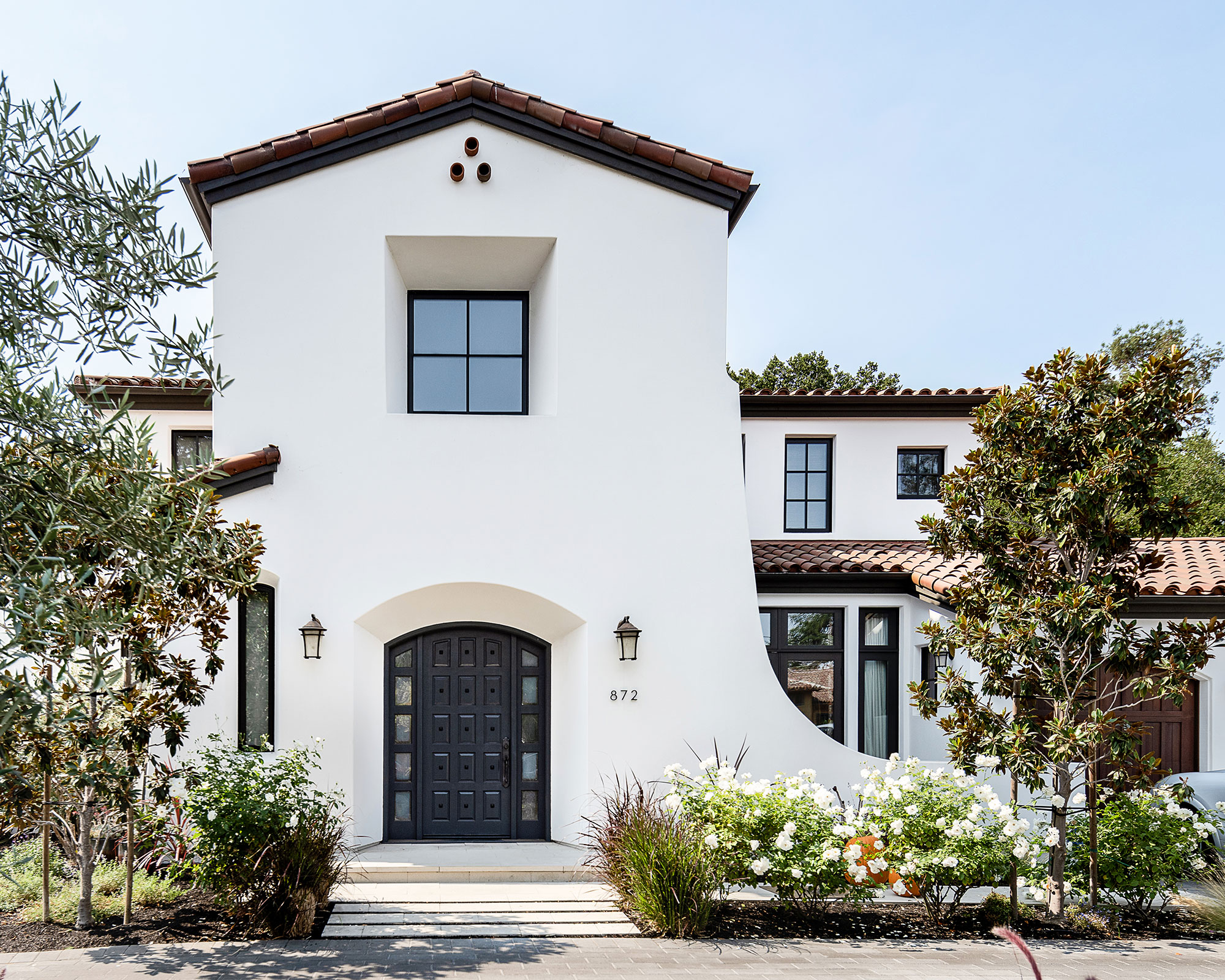How can I make the exterior of my house look expensive?
If you want to make the exterior of your house look expensive on a budget, you needn't settle for cheap chic. These tried-and-tested design tricks will give your home plenty of curb appeal


If you've been wondering 'how can I make the exterior of my house look expensive?' You are not alone. Before you invest in a complete revamp, think critically, because spending a small fortune on paint, fittings and landscaping does not always guarantee a smart, tailored or value-for-money look.
Exterior transformations don’t always have to be grand or expensive affairs. Instead, they can be slowly curated through minimal updates that don’t break the bank but leave your space looking expensive and luxurious. All your front yard landscaping, front door and front porch needs are a few thoughtful details to give it that five-star status that you have always desired.
Here, some of our favorite interior designers and garden landscapers offer their easy-to-copy ways to make the exterior of a house look expensive.
How can I make the exterior of my house look expensive?
Refreshing your interiors with a lick of paint, hanging stylish wallpaper or switching things up with new furnishings are the go-tos when it comes to decorating. But what about transforming your home’s exterior – where do you start and what style do you go for?
Or you may want to rethink your front yard, swapping unsightly weeds and uneven pavers for a symmetrical topiary, smart gravel, and a freshly manicured lawn.
On a more modest scale, there is a list of minimal tweaks, be it a newly painted front door color scheme or a new flight of patio steps, that will enhance your property’s allure and entice prospective buyers to step inside, should you wish to sell.
1. Replace a front door

A well-chosen front door design speaks volumes and sets the tone for what visitors might expect once inside, but there’s more to replacing a door than mere good looks. The latest materials are supremely strong and efficient, offering greater security, and are available as replicas of classic designs and modern alternatives. While the front door is all about first impressions, our love affair with extensions has put a greater emphasis on the rear of a property. Sliding, folding and patio doors have become almost ubiquitous, bringing light and a sense of the outdoors in all year round.
Design expertise in your inbox – from inspiring decorating ideas and beautiful celebrity homes to practical gardening advice and shopping round-ups.
If you live in a period property and your door is original, it’s worth trying to preserve it for as long as possible by repair, -or repainting. But, if you start afresh, there are many options, from modern and bespoke to reproduction and reclaimed.
Timber – Wooden doors look beautiful and enjoy an unmatched reputation. Look for FSC hardwood to ensure it is sustainably sourced. Wood can be painted and trimmed, but needs maintenance. Modern designs are heat efficient; reclaimed doors won’t last as long or keep out draughts as well.
Composite – Also known as GRP (glass-reinforced plastic) or fibreglass, this is low maintenance, highly insulated and will not warp. Wood-effect finish available.
Steel – Offers unrivalled strength and security, including multi-locking systems. It comes ready to paint. Traditional-style fibreglass coatings are also available.
uPVC – This may lack charm but it won’t flake, fade or rot. Doors in uPVC are highly efficient and often have enhanced security
2. Replace hardware and railings

Whether you're restoring or replacing your front garden gate, railings or front door hardware, make sure you maximize curb appeal with stylish, secure designs.
Aim for a look that is in keeping with the style and age of your home. Large ornate letter plates and knockers would be out of place on a door of smaller proportions, while simpler contemporary designs in classic finishes such as polished brass or nickel will freshen up period doorways. For high-quality originals, contact your local salvage yard. Modern designs in brushed aluminium and steel finishes tend to be simpler. To achieve a more rustic feel, wrought iron is perfect.
3. Paint your house

When it comes to paint colors for the exterior of a house, consider the architectural elements of your home in the same way that you’d look at interior paint colors alongside curtain fabrics and furnishings. ‘Do you have red or yellow-toned bricks? Limestone or granite walls? What color are your roof tiles? Build these into your design scheme to ensure your paint choices are complementary,’ advises Ruth Mottershead, creative director at Little Greene.
Creating contrast with light and dark colors is a popular look. ‘This highlights the structure of the house, creating clearly defined lines by contrasting light and dark. In turn, this draws the eyes to the specific details on the house that would be lost if all were the same or similar color,’ explains Megan Elsey, product manager at Ronseal. ‘Look at the color wheel to see which colors contrast and complement.’
Opt for exterior colors that sit happily in their environment. ‘Pastel hues such as soft pinks, lemon or powder blue can feel more sympathetic to a countryside or coastal property. Or, if you’re looking for a more reserved finish, consider drawing on tones from nature,’ suggests Helen Shaw, UK director at Benjamin Moore. ‘For those in suburban period properties, opting for deep rich colors for woodwork can look fantastic against a crisp white wall or the original brickwork.’
4. Add cladding

Whether your property is country, coastal or more contemporary, there’s a multitude of attractive, sympathetic exterior cladding styles to suit different budgets and buildings, and enhance a modern or period home. What's more, exterior cladding is often said to be one of the best ways to add value to a home, so you'll want to make sure that you get it right – first time.
Timber is a great choice if you are hoping to booster durability and aesthetic appearance. Timber can be used as horizontal boards, or vertically or horizontally for a contemporary style. ‘Naturally durable timbers such as larch, cedar and oak require no treatment to maintain them and many customers find this beneficial,’ says Tom Barnes, managing director, Vastern Timber.
Cladding is known to be an architectural feature that adds value to your home. ‘Great design always increases the value of a property,’ says Fanis Anastasiadis, lead architect, Facit Homes. ‘If the cladding material is functional, high quality and adds to the aesthetic, then the house is better protected thus increasing the property value and reducing maintenance costs. However, without a great design even expensive materials won't necessarily raise the value.’
5. Invite the five senses into your front yard

Plant a front yard flower bed with sensory garden plants that are filled with alluring sounds, scents and textures. Plants with interesting textures and shapes are key to sensory gardens. Try including a mix of contrasting forms to create visual interest.
Your front garden is such an important part of your home's curb appeal. If it’s well maintained, it’s a lovely reflection of how much you care about your home and neighborhood.
'Color in your front garden ideas can bring areas to life – the different tones imbuing a range of emotions, from soothing to stimulating,' says gardening expert Leigh Clapp. There are so many beautiful flower bed ideas that will enable you to create a planted oasis in your front garden.'
If you prefer a neater look, then topiary is a great option for structure. 'Topiary goes anywhere – it doesn’t matter if your yard is formal, informal, contemporary or traditional, topiary will slot in effortlessly adding a tailored presence all year round,' says gardening expert Matt James.

Jennifer is the Digital Editor at Homes & Gardens, bringing years of interiors experience across the US and UK. She has worked with leading publications, blending expertise in PR, marketing, social media, commercial strategy, and e-commerce. Jennifer has covered every corner of the home – curating projects from top interior designers, sourcing celebrity properties, reviewing appliances, and delivering timely news. Now, she channels her digital skills into shaping the world’s leading interiors website.